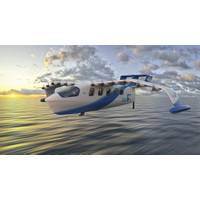
ADNOC Opts for Seagliders for Offshore Energy Crew Transportation
ADNOC Logistics and Services (ADNOC L&S), part of the Abu Dhabi National Oil Company (ADNOC), has partnered with an Abu Dhabi seaglider operator to introduce REGENT seagliders into its fleet for offshore energy logistics services.The seagliders will provide high-speed, zero-emission transport of passengers to and from offshore energy infrastructure.Seaglider technology represents an innovative solution to increase efficiency in maritime transportation and advance the energy transition.ADNOC L&S will use the all-electric seagliders to transport people to and from offshore energy infrastructure.
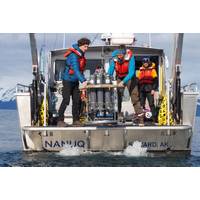
New CO2 Sensor Added to Seaglider
carbon dioxide in the ocean.Their design, published in the journal Ocean Science, is now available to the scientific community.During the past six years, a team from the UAF International Arctic Research Center and private companies developed a way to equip an unmanned, underwater vehicle called a Seaglider with a sensor that monitors carbon dioxide. The sensor communicates with a satellite to provide high spatial and temporal resolution data for weeks at a time.IARC’s industry partners — Advanced Offshore Operations and 4H JENA Engineering — made the Contros HydroC sensor lighter
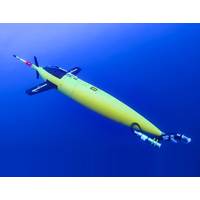
New Tech Frontiers for Ocean Gliders
that allows for easy integration of the WBT Mini, a miniaturised version of Kongsberg’s EK80 multibeam echosounder, into the gliders – was also developed.The Bioglider project was set up to apply these on to three commercially available gliders: a Huntington Ingalls Industries (HII) SeaGlider, a Teledyne Slocum and an Alseamar SeaExplorer. A key part of this is software; the echosounder was developed to work horizontally, but gliders go up and down all the time.The Seaglider has been on two missions, one in May 2022, then again in October 2022, on the Polar Front campaign in the Lofoton
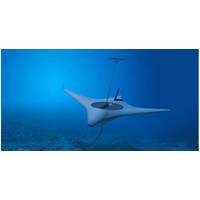
Back to the Future: Blended Wing Gliders Could Redefine Undersea Warfare
was first proposed by Henry Stommel in a 1989Oceanography magazine article, the underwater glider has become a mainstay of ocean scientific research. The Teledyne Marine Slocum glider(named for Joshua Slocum, the first to solo circumnavigate the globe in a sailboat),along with its cousins the Kongsberg SeaGlider, originally developed by the University of Washington, and Spray Glider, jointly developed by Woods Hole and Scripps Institute of Oceanography, have been at the forefront of the marine robotics revolution. Gliders are unique among autonomous underwater vehicles (AUVs). Rather than use thrusters
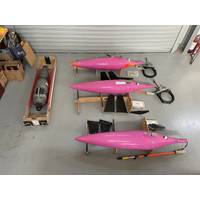
Cyprus Subsea Seaglider Fleet is Ready for Action
Cyprus Subsea Consulting Services Limited has established a fleet of four Seaglider AUVs to unlock new long-duration subsea survey and monitoring capabilities for research and commercial organizations. Featuring four M1 Seagliders acquired in February 2022, the new privately-owned fleet is one of the largest of its kind in Europe and is ready for operation now.With more than a decade of supporting clients on scientific, regulatory, and commercial Seaglider projects globally, Cyprus Subsea’s 1000-m rated M1 Seagliders are a boost in its capacity to provide real-time environmental monitoring
Cyprus Subsea to Rep HII's Unmanned Systems
Cyprus Subsea Consulting and Services, C.S.C.S. Ltd. announced it has signed an independent sales representative agreement with Huntington Ingalls Industries (HII) to represent its Seaglider autonomous underwater vehicles (AUVs) to commercial customers in Cyprus, France, Spain, Portugal, Albania, Montenegro, Malta and Norway. In addition to the promotion of Seaglider equipment sales, Cyprus Subsea is authorized to provide after-sale services including mission planning, launch/recovery, piloting, maintenance, training, data management, analysis and reporting.Unmanned Systems, a business group within
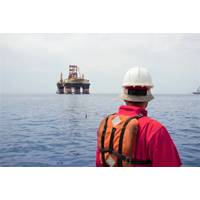
Nicola Offshore, Cyprus Subsea Partner Up
acquisition such as object and unexploded ordnance (UXO) search to the partnership. On the other hand, C.S.C.S. will contribute its expertise in subsea glider surveys and oceanographic sensors for marine monitoring, as well as its experience in automating aspects of marine environmental surveying.Seaglider with Limassol in the background - Credit Cyprus Subsea“The partnership helps to extend the reach of both companies, opening more opportunities to support clients in Northern and Southern Europe,” said Daniel Esser, Managing Director, Nicola Offshore. “While the commercial potential

Subsea Defense: Navy Deepens Commitment to Underwater Vehicles
uses gliders to monitor marine mammals and fish stocks, and collect data to better understand the dynamic air-sea interaction processes during tropical cyclones, and thus predict storm formation, track and intensity.NOAA employs 21 gliders, including Slocum G3 oceanographic gliders, Kongsberg Seagliders and Oculus gliders, used for fisheries research, storm intensity measurement and atmospheric and oceanic data collection. The vast majority of the NOAA-associated gliders are owned or operated by the IOOS regional associations (a partnership of 17 federal agencies and 11 regions,

Unmanned Marine Systems, Squared
the waves, so they can’t also gather meteorology data, says Heywood. They’re also hard to deploy from inshore, because they need a certain amount of depth to be able to move forward in their seesaw motion. The AutoNaut can travel faster (up to 3 knots) to an area of interest to deploy a SeaGlider, gather surface data and provide a GPS location.The SeaGlider shown slung beneath Caravela. Photo: AutoNautAttaching a SeaGlider to the AutoNaut was a mechanical challenge led by Alastair Nichol, lead mechanical engineer at AutoNaut. It had to be as fool proof as possible, robust and able to cope


 February 2025
February 2025





